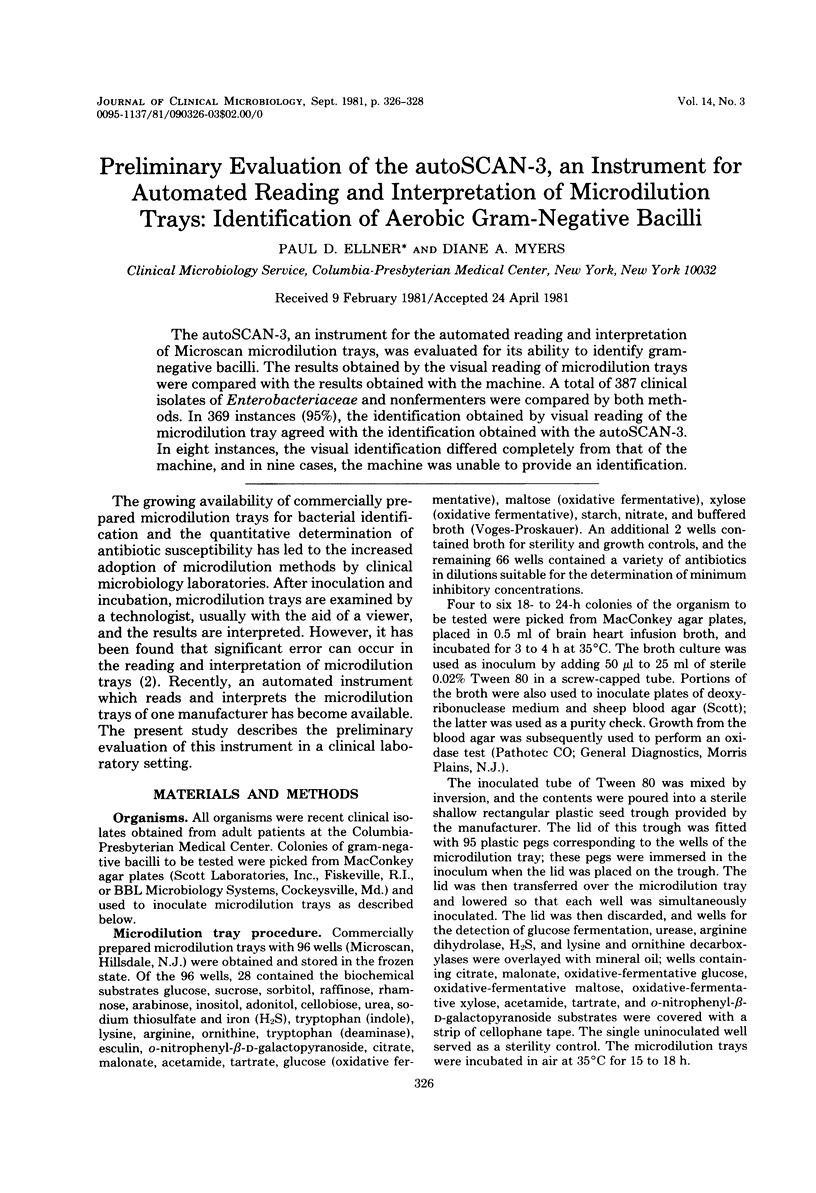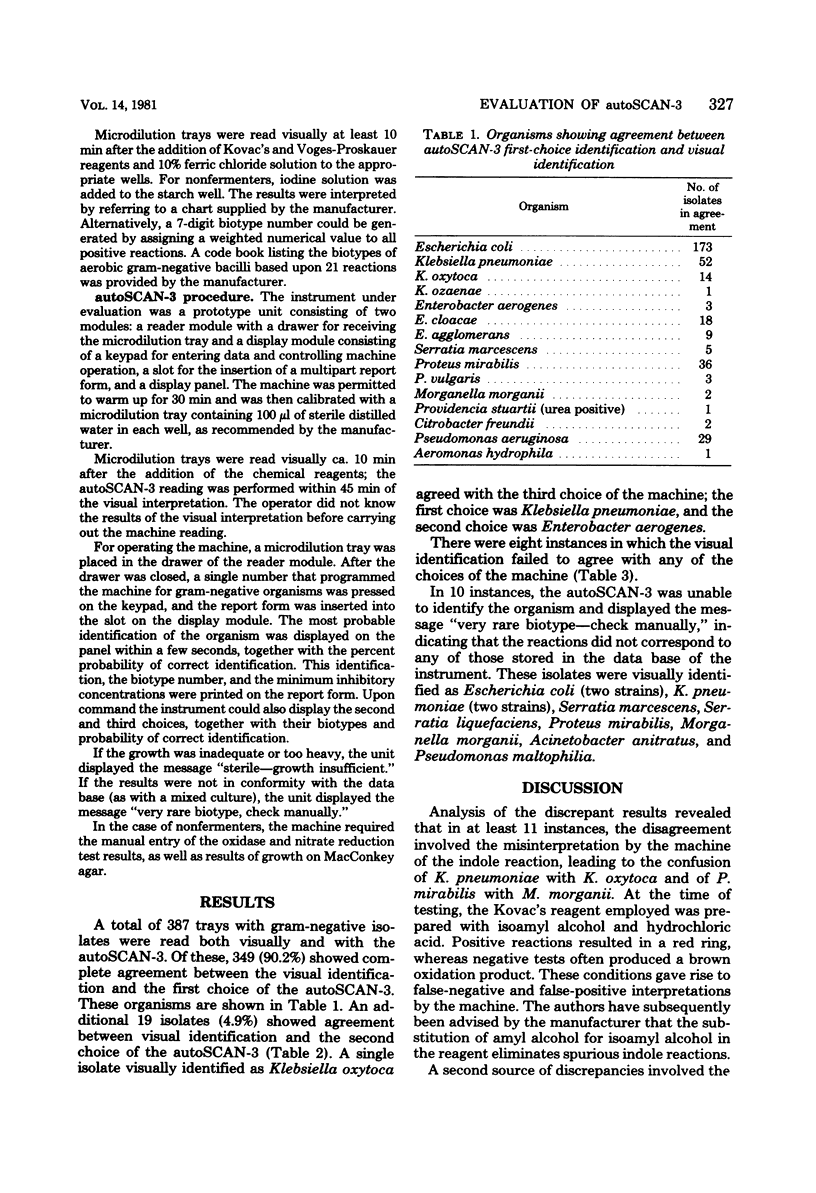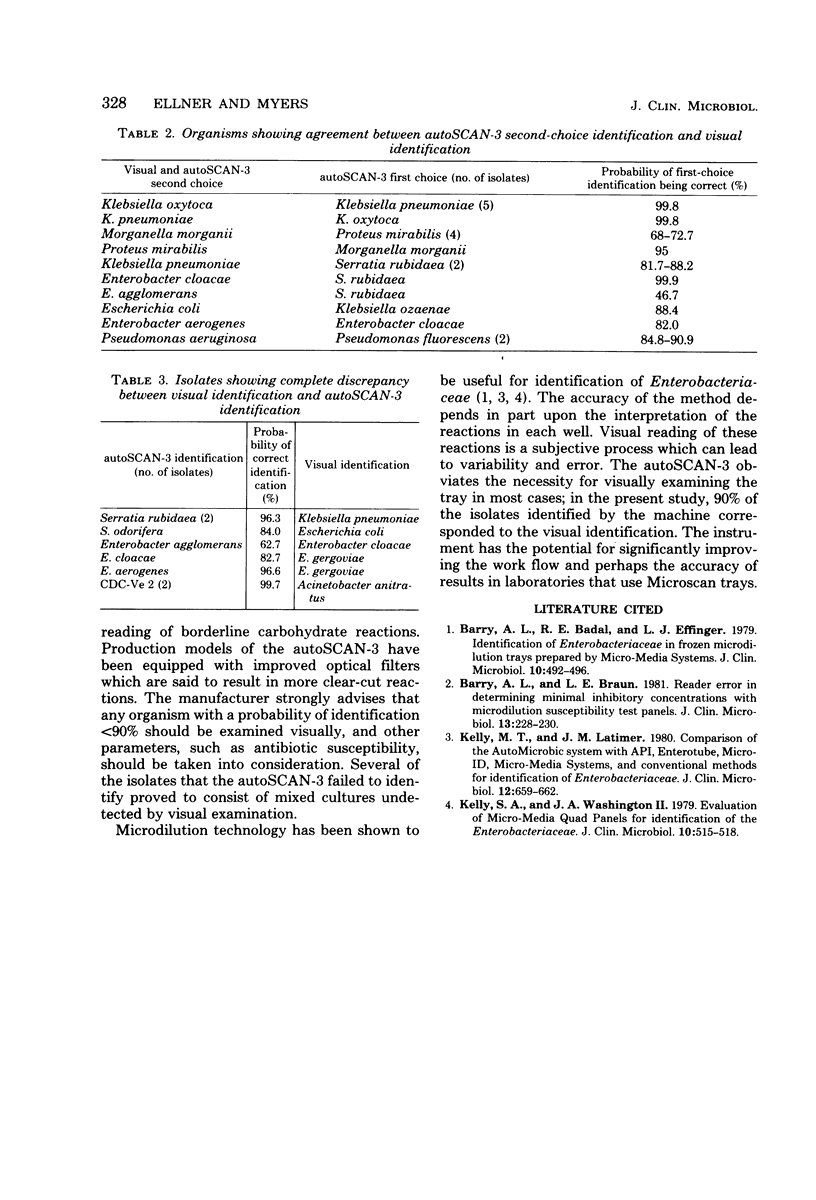Abstract
The autoSCAN-3, an instrument for the automated reading and interpretation of Microscan microdilution trays, was evaluated for its ability to identify gram-negative bacilli. The results obtained by the visual reading of microdilution trays were compared with the results obtained with the machine. A total 387 clinical isolates of Enterobacteriaceae and nonfermenters were compared by both methods. In 369 instances (95%), the identification obtained by visual reading of the microdilution tray agreed with the identification obtained with the autoSCAN-3. In eight instances, the visual identification differed completely from that of the machine, and in nine cases, the machine was unable to provide an identification.
Full text
PDF


Selected References
These references are in PubMed. This may not be the complete list of references from this article.
- Barry A. L., Badal R. E., Effinger L. J. Identification of Enterobacteriaceae in frozen microdilution trays prepared by Micro-Media Systems. J Clin Microbiol. 1979 Oct;10(4):492–496. doi: 10.1128/jcm.10.4.492-496.1979. [DOI] [PMC free article] [PubMed] [Google Scholar]
- Barry A. L., Braun L. E. Reader error in determining minimal inhibitory concentrations with microdilution susceptibility test panels. J Clin Microbiol. 1981 Jan;13(1):228–230. doi: 10.1128/jcm.13.1.228-230.1981. [DOI] [PMC free article] [PubMed] [Google Scholar]
- Kelly M. T., Latimer J. M. Comparison of the automicrobic system with API, enterotube, micro-ID, micro-media systems, and conventional methods for identification of Enterobacteriaceae. J Clin Microbiol. 1980 Nov;12(5):659–662. doi: 10.1128/jcm.12.5.659-662.1980. [DOI] [PMC free article] [PubMed] [Google Scholar]
- Kelly S. A., Washington J. A., 2nd Evaluation of Micro-Media Quad Panels for identification of the Enterobacteriaceae. J Clin Microbiol. 1979 Oct;10(4):515–518. doi: 10.1128/jcm.10.4.515-518.1979. [DOI] [PMC free article] [PubMed] [Google Scholar]


